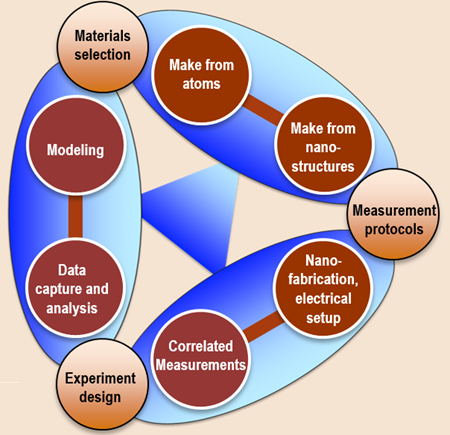CDI Project: Synthesis and Isolation of Functional Materials

Return to Functional Materials Use Case
PI: Yingge Du
Project Team: Zhenzhong Yang, Le Wang, Tim Pope
Project Term: October 2018 to September 2021
Key Science Questions:
- How to achieve atomic-level control over the initial stages of the materials (e.g., thin films, 2D layers)?
- How to separate the as-grown thin films into free-standing membranes (e.g., SrFeO2.5), and how does the material system emerge?
- How to achieve accurate control over bulk 2D crystals, and how to isolate them into nano-sheets (e.g., MoS2, WTe2, and MoO3)?
- How to integrate nano-sheet materials with complex oxides, and how do the new properties emerge?
Project Description: Combining atomically precise synthesis, in situ and operando measurement, and state-of-the-art modeling, this project aims to understand and control the dynamical evolution of functional materials in their working environments or extreme conditions.
By controlling the onset and trajectories of the chemical reactions, materials, and material systems with desired functional properties can be designed, synthesized, stabilized, and harnessed for technological benefits. A project focus is to expand synthesis capabilities beyond oxide epitaxy to enable the controlled fabrication and handling of oxide thin films, single-crystalline membranes, 2D, and 2D/oxide hybrid materials.
By controlling the onset and trajectories of chemical reactions, the project team can demonstrate that materials and material systems with desired functional properties can be designed, synthesized, stabilized, and harnessed for technological benefits. In particular, vacancy ordered SrFeO2.5 thin films will be investigated for their potential applications as redox driven memristors.